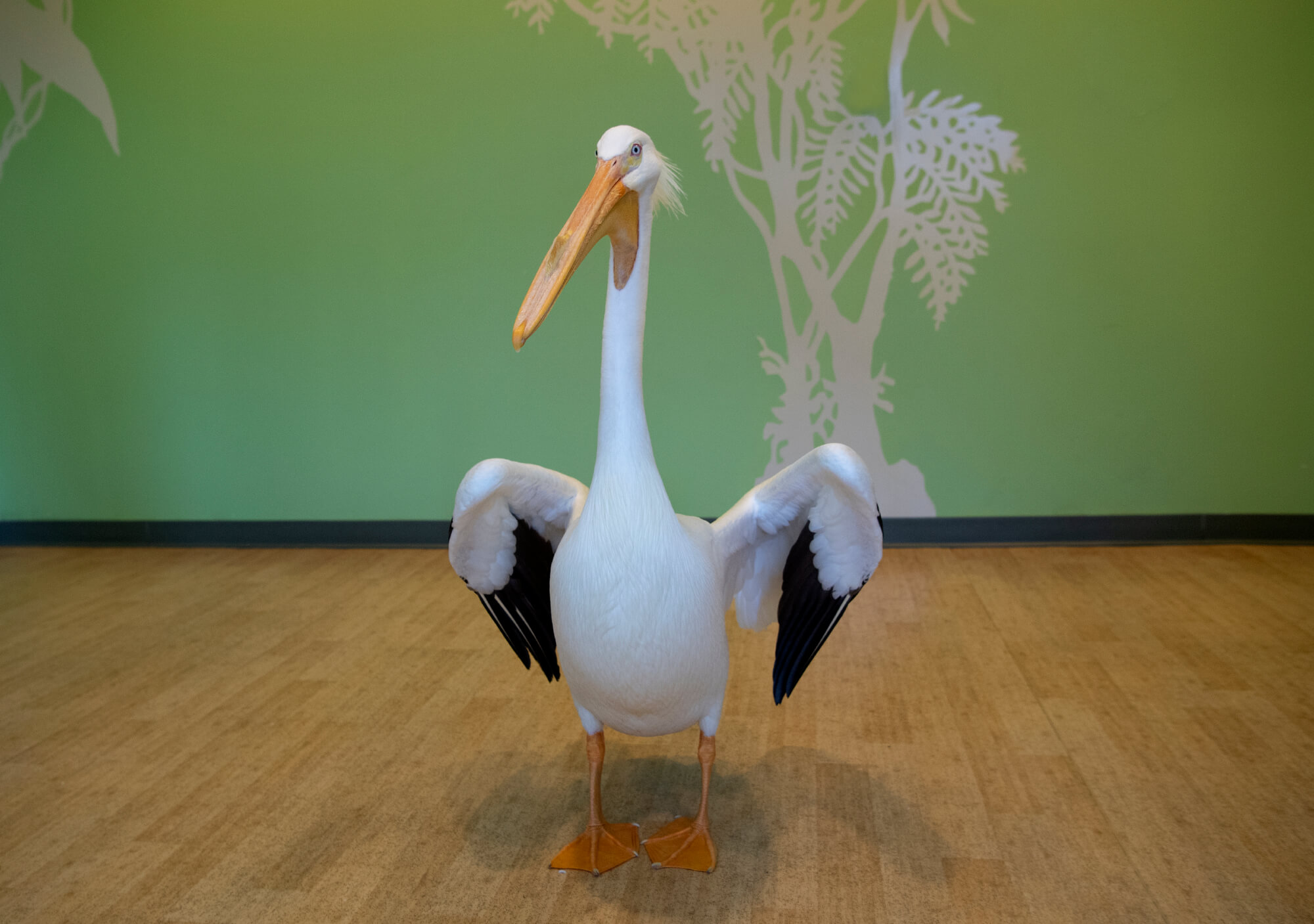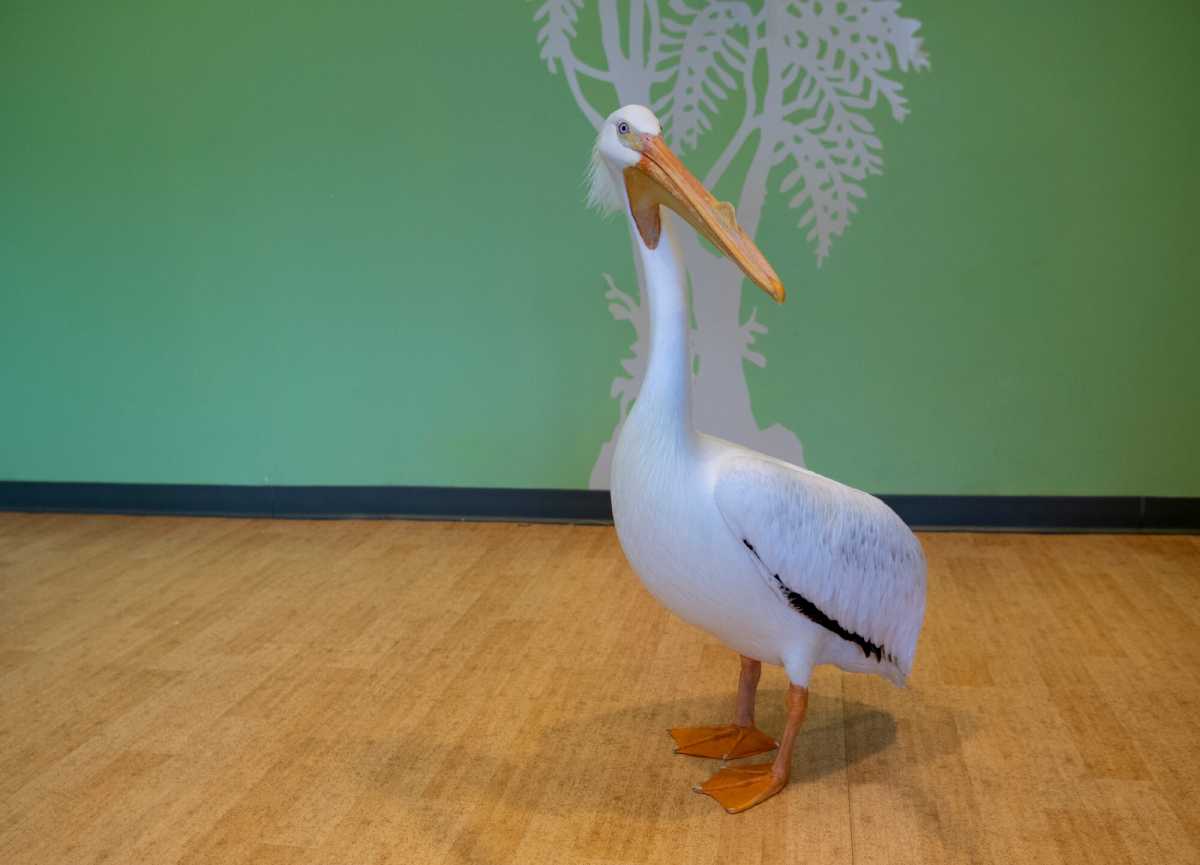Ready to cry going into the weekend?
The Bronx Zoo recently welcomed a new friend into its spacious home off Southern Boulevard, this one a rescued American white pelican who was shot in both of his wings some years ago.
This brave avian’s name is Amos and he first was found flightless and wounded with his wings drooping in the port of Corpus Christi, Texas back in 2016 where his road to rehabilitation began.
Amos was first brought to the Texas State Aquarium’s Wildlife Rescue Center where a team of veterinarians determined he was shot twice, likely while flying after analyzing Amos’ broken wings.
He underwent surgery and recuperated in the lone star state to a much healthier condition – though Amos is still unable to fully extend his right wing and cannot fly, thus making a release back into the wild unsafe.
After bunking at the Texas State Aquarium for a year, also earning the status of an “instant favorite” among keepers and visitors, arrangements were made to give Amos a forever home in the Bronx.

Kira Babuska
Given what experts described as Amos’ bold personality and friendly behavior, he’s managed to fit right into New York City as a new member of the zoo’s animal ambassador program, joining the likes of nearly 200 peers.
It’s in that program where Amos will privately meet students, campers, and families both in person and virtually to raise awareness of his tragedy and how teams of dedicated professionals facilitated his cross-continental rescue.
“Amos was in bad shape, but thanks to excellent work of the animal care staff at the Texas State Aquarium and Bronx Zoo, this charismatic bird is thriving and will help us further our mission through his story,” said WCS EVP and Bronx Zoo Director Jim Breheny.
Amos’ species, the American white pelicans are classified to be of least concern for endangerment but remain protected under the Migratory Bird Treaty Act of 1918.
Their habitual range spans from interior North America where they migrate inland to breed out to both the Pacific and Gulf Coast regions of the U.S. and Mexico.
Pelicans like Amos can grow to about four feet tall and have a wingspan of nearly nine feet.
Both males and females grow a temporary protuberance on the upper mandible of their beaks during breeding season.
American white pelicans are almost entirely white with the exception of black-tipped wings that are only visible while in flight.




























